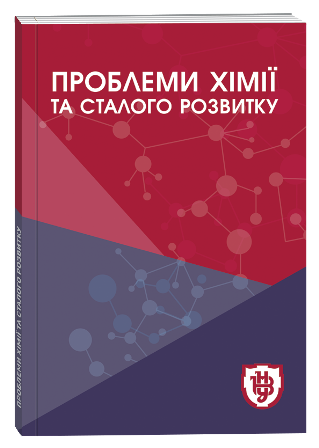SYNTHESIS AND STRUCTURE HOMOGEINITY OF PYRARGYRITE
DOI:
https://doi.org/10.32782/pcsd-2023-3-4Keywords:
grows of crystal, crystal structure, sulfides, and unit cellAbstract
The work is devoted to study peculiarities of obtaining single crystal of the Ag3SbS3 compound (the analogue of natural pyrargyrite. The material is prospective for non-linear optics, sensor technology and optoelectronics. The single crystal of the Ag3SbS3 compound was obtained with Bridgman-Stockbarger method in vertical two-zone resistance furnace with programmable temperature control. The temperature of of the melt zone was 783 K, annealing zone – 663 К. Crystal growth was rapid 0,10-0,24 mm/h; the temperature gradient in the growth zone was 4-6 K/mm. For the synthesis, a pre-cleaned quartz ampoule with a composition that was vacuumed to a residual pressure of 10-2 Pa has been used. For the obtaining the single crystal of Ag3SbS3 individual components (silver, antimonium and sulfur) with semiconductor purity were used. In order to analyze phase composition and calculate the crystal structure, the diffractgram of grown single crystal was obtained with using Diffractometer DRON- 4-13 (CuKα-radiation; the range 10≤2Θ≤80°; step 0,02°; time 15°s). The crustal structure has been calculated by Rietveld method. A program package WinCSD was used for calculations. The crystal structure of single crystal of the Ag3SbS3 belongs to trigonal system (Structure Type Ag3AsS3 (Prustite); SG R3c; Pearson symbol hR14,161). The calculated lattice parameters are a = 1.10402(9) nm, b = 0.8713(1) nm, V = 0.9197(3) nm3. In the structure of Ag3SbS3 Ag and S atoms are located in the site 18b and Sb atoms are in the site 6а. The study of the quantitative and qualitative composition of samples of the grown single crystal of the studied compound was carried out by the methods of energy dispersive spectroscopy (EDS) and energy dispersive X-ray spectroscopy (EDX) (scanning electron microscope Tescan Vega 3 LMU (SEM)). SEM images and results of energy dispersive X-ray analysis were obtained at a voltage of 20–25 kV under conditions of high vacuum (9.0·10–2 Pa).
References
Abbas, Z., Fatima K., Gorczyca, I., Irfan, M. Alotaibi, N. Alshahrani, T., Raza, H. H., Muhammad S. Proposition of new stable rare-earth ternary semiconductor sulfides of type LaTlS2 (La = Er, Eu, Tb): Ab-initio study and prospects for optoelectronic, spintronic and thermoelectric applications. Mater. Sci. Semicond. Process. 2022, 146, 106662. doi: 10.1016/j.mssp.2022.106662
Andriyevsky, B., Kashuba, A. I., Kunyo I. M., Dorywalski, K., Semkiv, I. V., Karpa, I. V., Stakhura, V. B., Andriyevska, L., Piekarski, J., Piasecki, M. Electronic вands and dielectric functions of In0,5Tl0,5I solid state solution with structural defects. J. Electron. Mater. 2019, 48, 5586-5594. doi: 10.1007/s11664-019-07404-2
Alhebshi, A., Sharaf Aldeen, E., Mim, R. S., Tahir B., Tahir, M. Recent advances in constructing heterojunctions of binary semiconductor photocatalysts for visible light responsive CO2 reduction to energy efficient fuels: A review. Int. J. Energy Res. 2022, 46, 5523-5584. doi: 10.1002/er.7563
Petrus, R. Yu., Ilchuk, H. A., Sklyarchuk, V. M., Kashuba, A. I., Semkiv, I. V., Zmiiovska, E.O. Transformation of band energy structure of solid solutions CdMnTe. J. Nano- electron. phys. 2018, 10, 06042-1-06042-5. doi: 10.21272/jnep.10(6).06042
Gan, Y., Miao, N., Lan, P., Zhou, J., Elliott, S. R., Sun, Z. Robust design of high-performance optoelectronic chalcogenide crystals from high-throughput computation. J. Am. Chem. Soc. 2022, 144, 5878-5886. doi: 10.1021/jacs.1c12620
Liu, Y., Li, F., Huang, H., Mao, B., Liu, Y., Kang, Z. Optoelectronic and photocatalytic properties of I–III–VI QDs: Bridging between traditional and emerging new QDs, J. Semicond. 2020, 41, 091701-091713. doi: 10.1088/1674-4926/41/9/091701
Elkatlawy, S. M., El-Dosokey, A. H., Gomaa, H. M. Structural properties, linear, and non-linear optical parameters of ternary Se80Te20-xInx chalcogenide glass systems. Boletin de la Sociedad Espanola de Ceramica y Vidrio. 2022, 61, 203-209. doi: 10.1016/j.bsecv.2020.09.007
Chung, I., Kanatzidis, M. G. Metal chalcogenides: a rich source of nonlinear optical materials. Chem. Mater. 2014, 26, 849-869. doi: 10.1002/chin.201412230
Halenkovič, T., Baillieul, M., Gutwirth, J. Němec, P., Nazabal, V. Amorphous Ge – Sb – Se – Te chalcogenide films fabrication for potential environmental sensing and nonlinear photonics, J. Materiomics. 2022, 8, 1009-1019. doi: 10.1016/j.jmat.2022.02.013
Benseddik, N., Belkacemi, B., Boukabrine, F., Ameur, K., Mazari, H., Boumesjed, A., Benyahya N., Benamara, Z. Numerical study of AgInTe2 solar cells using SCAPS. Adv. Mater. Technol., 2020, 8(1), 1-9.
Fabini, D. H., Koerner, M., Seshadri, R. Candidate inorganic photovoltaic materials from electronic structure-based optical absorption and charge transport proxies. Chem. Mater. 2019, 31, 1561-1574. doi: 10.1021/acs.chemmater.8b04542
Ewen P.J.S., Taylor W. The low-temperature Raman spectra of pyrargyrite (Ag3SbS3). Solid Stat. Comm. 1983, 45(3), 227-230. doi: 10.1016/0038-1098(83)90469-6
Gusain, M., Rawat, P., Nagarajan, R. Soft chemical synthesis of Ag3SbS3 with efficient and recyclable visible light photocatalytic properties. Mat. Res. Bull. 2014, 60, 872-875. doi: 10.1016/j.materresbull.2014.09.084
Govindaraj, P., Murugan, K., Veluswamy, P., Salleh, F., Venugopal, K. Efficacy of pyrostilpnite (Ag3SbS3) mineral as thermoelectric material: a first principles study. Mater. Sci. Semicond. Process. 2023, 162, 107513. doi: 10.1016/j.mssp.2023.107513
Akselrud, L., Grin, Yu. WinCSD: software package for crystallographic calculations (Version 4). J. Appl. Cryst. 2014, 47, 803-805. doi: 10.1107/S1600576714001058







